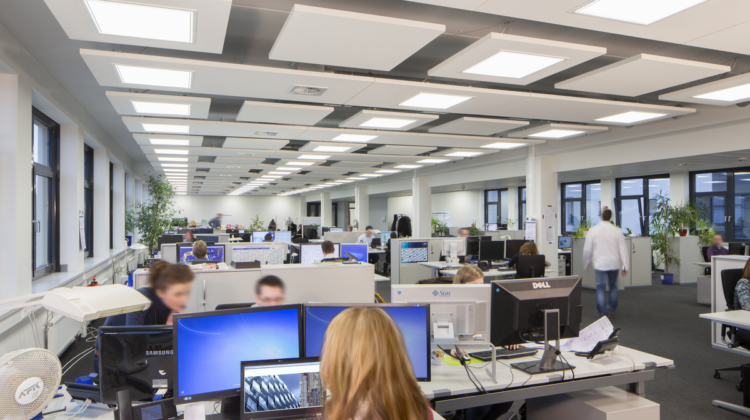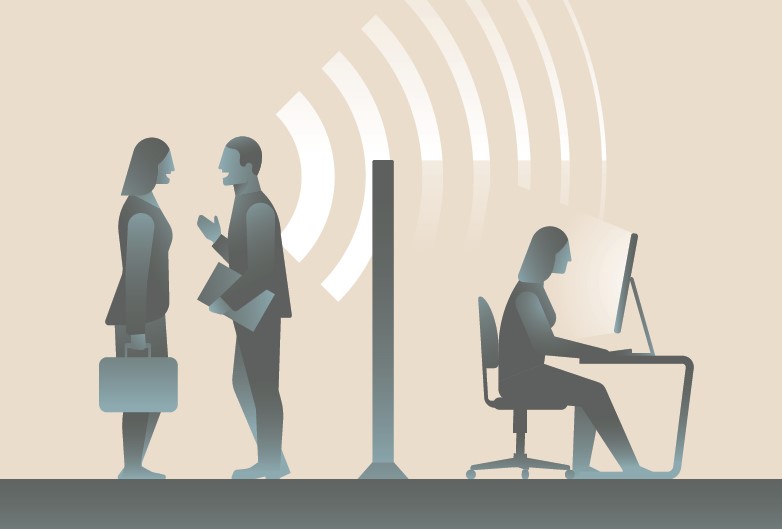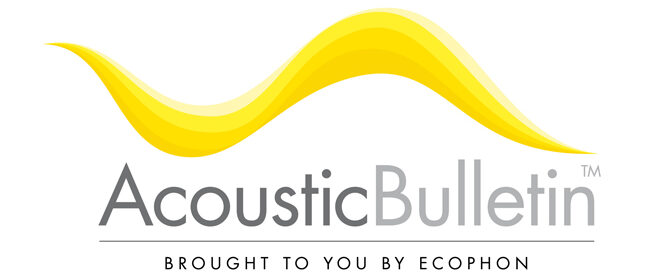
Being an editor on Acoustic Bulletin brings with it a fair bit of research. We often try to be a more accessible source of information on acoustics, but we also know that many of our readers are academics. In this post we test a new format where we recommend high quality studies to our readers. – Let us know what you think!
Office noise and employee concentration: Identifying causes of disruption and potential improvements
Ergonomics – 2005
In short:
An investigation into what constitutes office noise, how often workers find it to be subtracting from their work and what they would prefer should be done about it. The possibility of getting used to the most distracting sounds was als0o studied.
[expand title=”Click here to read abstract“]
A field study assessed subjective reports of distraction from various office sounds among 88 employees at two sites. In addition, the study examined the amount of exposure the workers had to the noise in order to determine any evidence for habituation. Finally, respondents were asked how they would improve their environment (with respect to noise), and to rate examples of improvements with regards to their job satisfaction and performance. Out of the sample, 99% reported that their concentration was impaired by various components of office noise, especially telephones left ringing at vacant desks
and people talking in the background. No evidence for habituation to these sounds was found. These results are interpreted in the light of previous research regarding the effects of noise in offices and the ‘irrelevant sound
effect’.
[/expand]

Authors: SP Banbury & DC Berry
Find the entire study here.
Control and anticipation of social interruptions: Reduced stress and improved task performance
Journal of Applied Social Psychology – 2009
In short:
This study explores interruptions in office work, their effects on workers and how the experienced control over interruptions modified these effects.
[expand title=”Click here to read abstract“]
Social interruptions are frequent occurrences that often have distressing consequences for employees, yet little research has gauged their effect on individuals. Participants were exposed to 2 social interruptions as they engaged in a computer task with an accepted performance goal. Participants who were able to anticipate social interruptions performed significantly better than did those who could not anticipate them. Participants who had the opportunity to prevent interruptions reported significantly less stress than those who did not have this opportunity. This reduction in stress resulted even when participants did not take advantage of this opportunity. Implications for job performance and job satisfaction are discussed. Organizational strategies for how leaders can help employees manage social interruptions are suggested. (PsycINFO Database Record (c) 2016 APA, all rights reserved)
[/expand]

Authors: Alimohammadi, I., Azkhosh, M., Gohari, M., Sandrock, S. & Soltani, R.
Find the entire study here.
Momentary Interruptions Can Derail the Train of Thought
Journal of experimental psychology
In short:
An investigation into how effect of varying types of interruptions results in mistakes in different type of cognitive work. It is demonstrated how detrimental interruptions of concentration is to the quality of the work being performed.
[expand title=”Click here to read abstract“]
We investigated the effect of short interruptions on performance of a task that required participants to maintain their place in a sequence of steps each with their own performance requirements. Interruptions averaging 4.4 s long tripled the rate of sequence errors on post-interruption trials relative to baseline trials. Interruptions averaging 2.8 s long–about the time to perform a step in the interrupted task–doubled the rate of sequence errors. Nonsequence errors showed no interruption effects, suggesting that global attentional processes were not disrupted. Response latencies showed smaller interruption effects than sequence errors, a difference we interpret in terms of high levels of interference generated by the primary task. The results are consistent with an account in which activation spreading from the focus of attention allows control processes to navigate task-relevant representations and in which momentary interruptions are disruptive because they shift the focus and thereby cut off the flow.
[/expand]
Authors:

Find the entire study here.
The effect of noise absorption variation in open-plan offices: A field study with a cross-over design
Journal of Environmental Psychology
In short:
A so called “cross-over design” study where acoustic conditions in an office building was changed 3 times while the effects on stress and perceived disturbances was in office workers was recorded.
[expand title=”Click here to read abstract“]
Noise has repeatedly been shown to be one of the most recurrent reasons for complaints in open-plan office environments. The aim of the present study was to investigate if enhanced or worsened sound absorption in open-plan offices is reflected in the employees’ ratings of disturbances, cognitive stress, and professional efficacy. Employees working on two different floors of an office building were followed as three manipulations were made in room acoustics on each of the two floors by means of less or more absorbing tiles & wall absorbents. For one of the floors, the manipulations were from better to worse to better acoustical conditions, while for the other the manipulations were worse to better to worse. The acoustical effects of these manipulations were assessed according to the new ISO-standard (ISO-3382-3, 2012) for open-plan rooms acoustics. In addition, the employees responded to questionnaires after each change. Our analyses showed that within each floor enhanced acoustical conditions were associated with lower perceived disturbances and cognitive stress. There were no effects on professional efficiency. The results furthermore suggest that even a small deterioration in acoustical room properties measured according to the new ISO-standard for open-plan office acoustics has a negative impact on self-rated health and disturbances. This study supports previous studies demonstrating the importance of acoustics in work environments and shows that the measures suggested in the new ISO-standard can be used to adequately differentiate between better and worse room acoustics in open plan offices.
[/expand]

Authors: Aram Seddig, Erik Berntson, Fredrik Jönsson, Christina Bodin Danielsson, Hugo Westerlund.
Room acoustics and work performance – Experimental study in a full-scale open-plan office laboratory
ICBEN – 2011.
In short: A study demonstrating the effects of “speech privacy” in an office under four different acoustic conditions in terms of the work performance, satisfaction and experienced workload of the workers.
[expand title=”Click here to read abstract“] The aim of the study was to show that the room acoustic design of an open-plan office that contains speech sounds has an effect on cognitive work performance, acoustic satisfaction and perceived workload. The study was carried out in an open plan office (90 m2). Four acoustic conditions, with different speech privacy levels, were built. The conditions were created by changing the acoustic environment using screens, absorbers, and a speech masking system. Speech was produced from empty workstations. In addition, a silent condition was used as a reference condition. Altogether 119 subjects participated in the experiment (a between-groups design). Subjects were exposed to the acoustic condition for nearly 4 hours. Performance was measured with several cognitive tasks which are essential for many kinds of office work. Questionnaires were used to gather information on acoustic satisfaction and subjective workload. The silent condition was the most beneficial acoustic condition. The condition with the lowest speech privacy was the least beneficial. The experiment has high practical relevance for the acoustic design guidelines as the acoustic conditions of this experiment can be realized in open-plan office workplaces. [/expand]

Authors: Annu Haapakangas, Valtteri Hongisto, J. Kokko & David Olivia
How did you like this post format? Please let us know below!
If you are interested in how to improve acoustic conditions in offices you can read more here:

